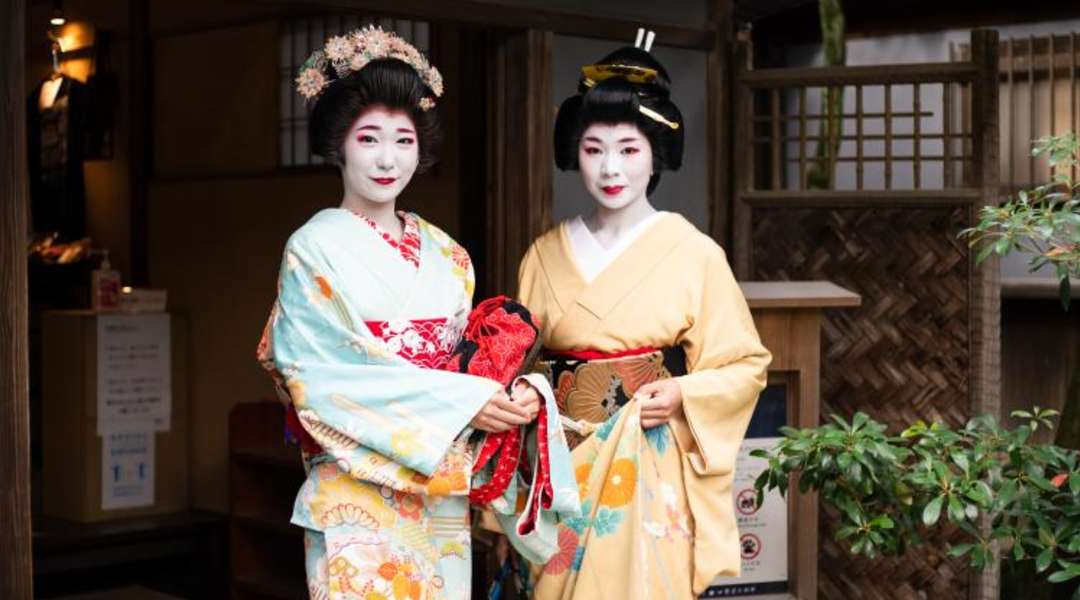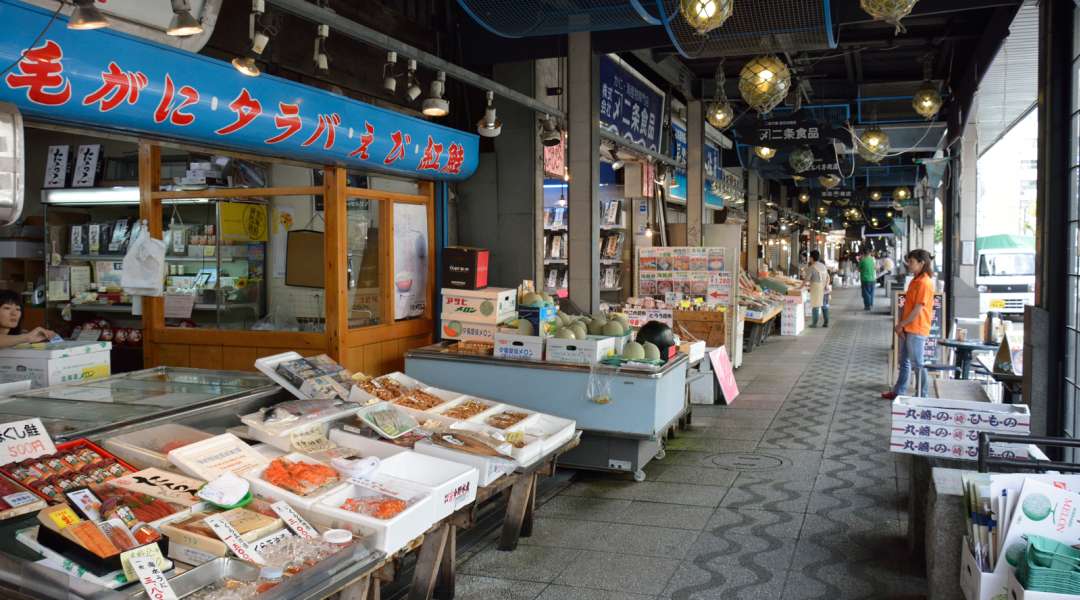
Elegant geisha, imposing sumo wrestlers, sushi with ingredients fresh from the sea - these are just some of the things everyone needs to experience in Japan at least once. Next year, we’ll be looking to rediscover ourselves off the beaten path and many of the much-loved bastions of Japanese traditional culture are found in the perfectly accessible but lesser-known corners of Japan's many islands. Discover how to enjoy Japan’s classic experiences away from the tourist hotspots and not limit yourself to places like Tokyo!
Japanese geisha in the North

Make your way to Niigata’s Furumachi where geisha have been welcoming guests since the Edo period (1603-1868). In its heyday, there were 300 geisha entertaining guests in Furumachi’s traditional ryotei restaurants, but the number has gone down to 20, making this very much an endagered art form. Most of the ryotei restaurants have a rich heritage with original buildings dating back to the 19th century. Furumachi is one of Japan’s main three places to enjoy performances by Japanese geisha after Kyoto and Kanazawa, but it is known as the most open to newcomers as you don’t need an introduction from a regular customer in order to access it! Just make sure to book in advance and you can take part in an evening of Japanese culture with the geisha guiding you through the process.
Don’t forget to explore Niigata city's many historic residences and try the region’s delicious sake with your meal at the restaurant. Niigata is famous for its sake, with over 90 breweries - the oldest one has been making this incredible drink for over 450 years. And that's not to mention the sake sample vending machines at the traditionally styled Ponshukan in the station, or the sake hot spring baths in nearby Echigo-Yuzawa.
You can easily reach Furumachi by bullet train from Tokyo to Niigata station, and a 6 minute bus journey on the other side.
Watch the sumo squat

For prime sumo entertainment head south to Fukuoka’s Kokusai Center to watch one of Japan’s main sumo tournaments live! Nothing beats the excitement of watching sumo wrestlers up close as they strive to push their opponent over the line. Every November Fukuoka fills with sumo fans trying to spot the wrestlers as they relax in the city and eat the famous sumo favourite, chanko nabe, which is a hot pot eaten in large quantities to maintain their weight-gaining regime. The yearly competition is structured around rank so the rising stars wrestle before lunch and the top sumo wrestlers are on later in the day. Different to its Tokyo and Osaka siblings, the Fukuoka offering is lesser known to overseas visitors, allowing you to beat the tourist hordes to it, and enjoy some of the city's incredible street food culture while you're at it!
Just like with every popular event, though, we recommend booking in advance - the tickets are usually released in early October so keep an eye out for them on their official website here. You might get lucky on the day but it requires a lot of queuing from early in the morning!
Japanese sushi fresh from the waters

Everyone has heard of Tokyo’s Tsukiji Market with its morning auctions and mouth-watering seafood. However, the area Japanese people associate with the freshest seafood is actually northern Hokkaido where our favourite spot for heavenly fish is the Nijo Market in Sapporo! Sushi, seafood bowls with rice covered in sashimi (called kaisendon), and fresh ingredients are all things you can experience in the local restaurants and eateries. Lovingly known as ‘Sapporo’s Public Kitchen’, it’s a wonderful place to finally try all the seafood you heard Japan was famous for such as crab, oysters, salmon, tuna, fish roe, sea urchin, and so much more. It’s also also one of few places in Japan where you can try haggling when buying local delicacies at the fish markets which makes it an overall exciting time.
And if you're one of the many visitors mourning the loss of the early morning fish auctions at Tsukiji in Tokyo, jump on a direct train from Sapporo and spend the night in the stunningly scenic port city of Hakodate. As always, it's best if you book a tour, but set your alarm and make your way down to the dockside at 5am to see all the local chefs and cooks come down to snap up the fresh produce, including the local speciality - squid!

Live it like a samurai

Aizu-Wakamatsu is a northern castle town steeped in samurai history and filled with remnants of those days: the local samurai were the last to fall in Japan’s final rebellion, the Boshin War, fighting to protect the old samurai ways against reform at the hands of the newly installed emperor. The esteemed Nisshin-kan School trained many of the participants of that rebellion and Japan’s best warriors over the years. In fact, many believe that the people of the Aizu region hold on to some of the strict self-discipline principles of the samurai warriors, to this day. Nowadays you can learn more about the area’s dramatic history in Tsuruga Castle, take a trip back in time in the shops and breweries of Nanukamachi street, see how they lived in the Aizu Samurai Residence, and then head to the Nisshin-kan School to polish your essential combat skills. While in the castle surrounds, make sure to drop by the Butokuden Dojo, the hallowed halls where locals continue to train to this day. Kyudo Japanese archery, kendo sword fighting, local crafts, and other activities will fill you with the samurai spirit.
Reachable in around two and a half hours from Tokyo by bullet train and connecting local train, it’s the perfect destination.
Tread between Japanese torii gates

Seeing Japan’s vibrant red shinto shrines with their beautiful torii gates is a highlight of every holiday in Japan. Places like the famous Fushimi Inari Shrine in Kyoto make their way to many bucket lists for a reason but there is a just as impressive shrine in Saga prefecture which will amaze you with its red gates, natural beauty and smaller crowds! Called Yutoku Inari Shrine, it’s one of Japan’s three largest shrines devoted to inari - a deity that usually takes the form of a fox and is associated with good luck, rice, and wine. Yutoku Inari Shrine is filled with foxes, your own companions on your personal adventure. Another unique thing about this shrine is that it’s main hall is located 18 metres above the ground, which adds to its staggering charm. Follow the trail up the mountain lined with torii gates and smaller shrines to find a small Okunoin shrine hall and enjoy beautiful views of the nearby sea.

There are many different ways to experience Japan but learning how to wield a samurai sword, watching a sumo wrestler preparing for a match or hiking up a mountain surrounded by torii gates are at the top of our lists. After returning from your dream holiday it's those unique experiences that stay in your memory for a lifetime.
Confused about how to get out of Tokyo and get beyond Kyoto? Find out more about Japan's comprehensive and efficient transport links here.
For even more of a deep dive into Japan's many traditional and regional cultural experiences, take a peek here.
To stay up to date with all the latest happenings in Japan follow us on Instagram, Facebook or Twitter!

















































